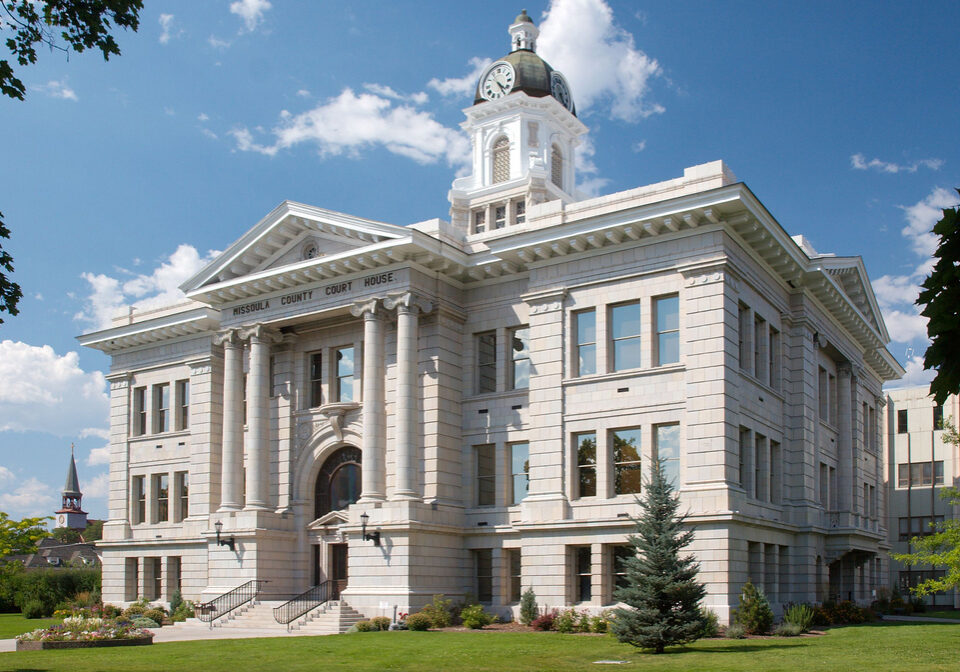Missoula, Billings Courts Create New Rules for AI-Drafted Filings
Self-represented litigants raise concerns about barriers to AI tools that help navigate complex court procedures
By Roy McKenzie
Nov 25, 2025
MISSOULA — Two of Montana’s 22 judicial districts have quietly adopted rules requiring attorneys and self-represented parties to disclose when they use artificial intelligence in court filings, according to reporting by Travis Mateer, a Missoula-based investigative journalist who publishes ZoomChron.
The 4th Judicial District Court, which covers Missoula and Mineral counties, and the 13th Judicial District Court in Yellowstone County are the only Montana districts to implement such requirements, raising questions about whether the state will adopt a uniform approach to regulating AI use in legal filings.
Both rules mandate that anyone using generative artificial intelligence tools like ChatGPT must identify the AI program used and certify that all legal citations have been verified as accurate.
The 13th District rule took effect April 1, 2025. The 4th District’s rules document shows a revision date of Oct. 31, 2025, indicating Rule 3G has been in effect at least since then.
National Trend Toward Disclosure
Montana’s two districts join a growing number of courts nationwide that have enacted AI disclosure requirements in response to high-profile incidents where attorneys submitted filings containing fake case citations generated by AI tools.
Since 2023, hundreds of state and federal judges have issued standing orders, general orders, or local rules addressing AI use in their courtrooms. Most courts that have adopted rules require some form of disclosure and certification when parties use generative AI.
However, only the Eastern District of Texas has adopted AI rules at the district-wide level in its local rules. Most AI restrictions come from individual judges rather than court-wide policies.
In Montana’s federal court, Judge Donald W. Molloy of the U.S. District Court for the District of Montana has his own AI order—but it applies only to out-of-state attorneys appearing pro hac vice (admitted temporarily for a specific case), not to Montana-licensed lawyers or self-represented litigants.
The state district court rules in Missoula and Billings apply to everyone appearing before those courts.
Access to Justice Concerns
Mateer’s reporting highlighted concerns that the disclosure requirements could create barriers for self-represented litigants who use AI tools to navigate Montana’s legal system.
“While my use of ChatGPT to navigate the courts has been limited, I know someone who has been using ‘generative AI’ [to navigate the court system] to great success,” Mateer wrote in his report on the 4th Judicial District rule.
Western Montana News independently confirmed that the 13th Judicial District in Yellowstone County has also adopted a nearly identical rule, making these the only two of Montana’s 22 judicial districts with such requirements.
Mateer described AI as helping “level the playing field” in a system where judges routinely warn pro se litigants they will be “monumentally disadvantaged” without legal representation.
The rules come as many Montanans struggle to find legal representation. In rural areas and for certain types of cases, attorney conflicts, limited availability, or cost can leave individuals with no choice but to represent themselves.
AI tools can help self-represented parties understand court procedures, draft extension requests, learn how to serve opposing parties, and navigate filing requirements—tasks that would otherwise require paying an attorney or attempting to decipher complex rules alone.
Balancing Accuracy and Access
Courts nationwide have faced a documented problem with AI-generated legal filings containing fabricated case citations—so-called “hallucinations” where AI tools invent non-existent court decisions.
Multiple attorneys have faced sanctions, referrals to grievance panels, and public admonishment after submitting briefs citing fake cases generated by tools like ChatGPT.
The Montana rules appear designed to address this concern by requiring parties to verify citations before filing, while still allowing AI use with proper disclosure.
The 13th Judicial District’s Rule 35 states: “If an attorney for a party or a self-represented party has used generative Artificial Intelligence (hereafter ‘AI’) in the preparation of any document filed with the 13th Judicial District Court, they MUST, identify the type of AI used and CERTIFY every citation to the law or record in the filing has been verified as accurate.”
The 4th Judicial District’s Rule 3G contains nearly identical language.
Questions About Implementation
It remains unclear why only Montana’s two largest judicial districts—covering the state’s population centers of Missoula and Billings—have adopted AI disclosure rules while the other 20 districts have not.
Mateer reported that according to his source, even the clerk’s office in the 4th District was unaware the rule had been updated—raising questions about how parties appearing before the court would know about the new requirement.
Whether other Montana judicial districts are considering similar rules, or whether the state will adopt a uniform statewide approach to AI disclosure requirements, remains to be seen.
Categories: Government, Law, Technology
Don’t miss the week’s top Montana stories
Join readers across Montana who rely on WMN for independent reporting.
Unsubscribe anytime. Want to support WMN? Upgrade for $4/month →




